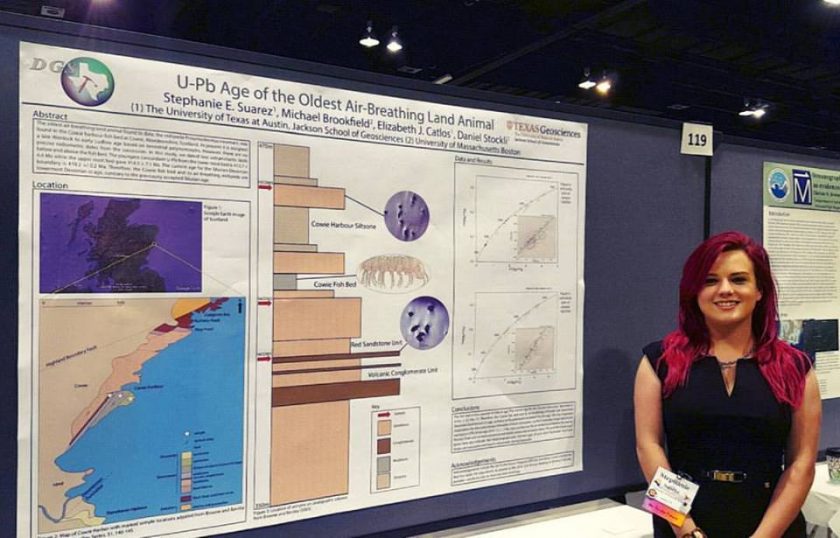Fossil Loses Claim to Fame
November 20, 2017

Some good scientific sleuthing by an undergraduate at The University of Texas at Austin has helped rewrite one of the earliest chapters in the planet’s evolutionary history. The research, led by the Jackson School of Geosciences, has shown that the millipede thought to be the world’s oldest known airbreathing land creature is in fact about 14 million years younger than previously thought and cannot be the original land breather.
The paper was published June 28, 2017, in the journal PLOS ONE. The study focuses on a species of millipede called Pneumodesmus newmani, which was thought to have been breathing air on solid ground during the late Silurian period some 428 million years ago. All other animal fossils discovered before this time have been from animals that lived and breathed under water.
The millipede fossil was discovered in 2004 in Aberdeenshire, Scotland, and dated by testing plant spores in sediment found in the general area, a method that contains a significant amount of scientific uncertainty compared with radiometric dating methods, said Elizabeth Catlos, a study author and associate professor in the Jackson School’s Department of Geological Sciences.
Catlos, who obtained the soil samples from co-author Michael Brookfield of the University of Massachusetts Boston, tasked Jackson School senior Stephanie Suarez, the paper’s lead author, with finding grain-sized zircons in the sediment that could be dated in the Jackson School’s Laser Ablation Inductively Coupled Plasma Mass Spectrometry Laboratory. Zircons are minerals that trap radioactive elements inside of them when they form, which can help scientists more accurately determine the age of rock or sediment where they are found.
Suarez was introduced to the geosciences in high school through the Jackson School’s GeoFORCE Texas outreach program. The handful of zircons she found that are younger than 428 million years old definitely show that the Pneumodesmus newmani specimen was not the first organism on Earth to breathe air while on land.
“This wasn’t it,” Catlos said. “We have to keep looking.” Jackson School Professor Daniel Stockli was a co-author on the study.
Funding was provided by the Geological Society of America South
Central Section.
